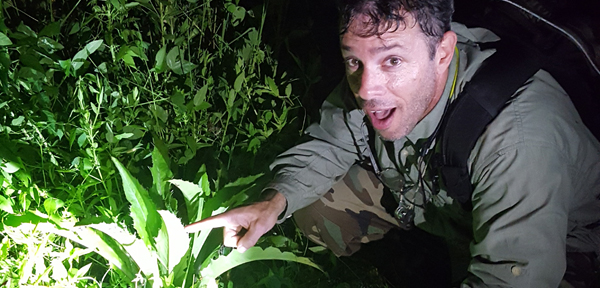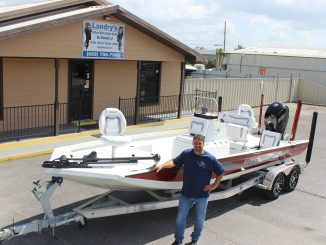
When Zack Lemann recently found a brilliantly colored insect in the Des Allemands swamps, it was a Holy Grail find for this curator of the Audubon Butterfly Garden and Insectarium.
“Last month, for the first time, I found a pink katydid,” said Lemann, still marveling over finding one.“I think we’re very fortunate in that we have a lot of green space, natural undeveloped area with rich habitat,” Lemann said.
Part of that space is about two miles of privately owned land in Des Allemands that the Audubon Institute has access to. Lemann, along with other professionals, has typically visited the area two summers a year for the last 12 years.
“This has consistently been one of the best areas of diversity and number of insects collected,” he said.
They set up mercury vapor and ultraviolet lights at night in the swamp that draw thousands of insects in their night hunts. Among them are the prized catches like the fiery searcher beetle that Lemann calls an “attractive critter,” or a large scarab beetle with three horns.
The katydids come, too.
While typically green, they can also be yellow and a much rarer brilliant pink. They look like a leaf flattened on the side and have wings shaped like a leaf. There was once a colony of them there, but it crashed and now Lemann is using new technology at the Insectarium’s lab to breed them and show them in exhibits that draw a worldwide crowd.
They’re not only colorful, but also musical.
The males earned the insect’s name by rubbing their wings together to make sounds to attract a mate, Lemann said.“I’m dealing with a group of insects about a million species strong,” Lemann said.
A good night in Des Allemands attracts the katydids along with fishing spiders, ox beetles, fiery searchers and click beetles (they play dead and when resting on their back thrust themselves into the air to evade predators).
Predaceous diving beetles, water scavenger beetles and giant water bugs can be found as well.
“It’s been years of a lot of fun doing this,” Lemann said. “This place is special and ought to be preserved, but people ought to go out and see these insects, too, whether they’ve explored the environment or not.”
The group also goes out in flat boats on trips that turn up alligators and frogs, but they’re looking for the water scorpion. It’s a sticklike insect with a stinger that grabs its prey and inserts venom. When the water is disturbed, they float to the surface and are collected.
They also collect insects during the day that have included the large orb weaver spiders, as well as velvet ants locally known as cow killers or cow ants, Lemann said. They are large, hairy and wingless and are actually wasps.
“More people should enjoy checking out bugs in nature,” he said. “If we see them we’re excited about showing them to people from all over the world.”




Be the first to comment